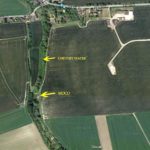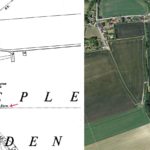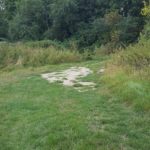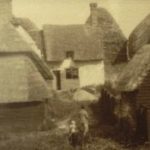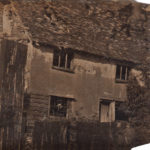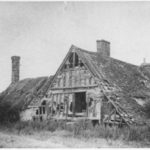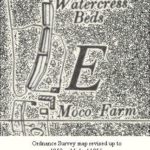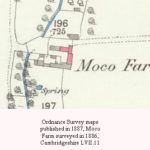Moco A Truly Special Place
Please click on links in bold in the text to read more.
Moco is a place-name of uncertain origin and intriguing as to how it came to be applied to a farmstead and historic hamlet straddling Cheyney Water. Isolated from Steeple Morden village centre and other hamlets; it is a supremely evocative spot lying in the shallow valley of the chalk stream. The farmstead and dwellings were increasingly abandoned from the late 1800s and by the early 1930s were left only a stock yard with shelter and derelict cottages utilised for storage.
The remoteness of the location evokes the slower pace of farming in the past, that was labour intensive and obliged the care of livestock. Those responsible for providing that care, best lived close by.
Historically, Moco was a modest farmstead with six associated dwellings, housing some thirty inhabitants. Moco Farm
Today, Moco is an unconstrained mass of wild flowers, long grass, bushes and trees, set messily within the adjoining arable fields. An extensive area of fashionable re-wilding that has occurred with little human direction. Over the last 40 years or more this wilderness has grown dramatically and today it demands huge imagination to visualise it tamed and a busy little agricultural community at this spot. Moco Farm Modern
Moco Farm acquired notoriety in 1734, when a harmless maid-servant Elizabeth Pateman, age 17 was murdered there by an unknown assailant. The wicked crime was reported widely in newspapers up and down the country and these reports supply the details we know today. Murder at Moco
Later in the 1880s, John Charter of Moco Farm struggled with depression. Farming had become increasingly unrewarding and it seems it all became too much for John and in 1881 he attempted suicide by cutting his throat. Sadly, he was sentenced to three month’s imprisonment without hard labour and this was followed by confinement in Fulbourn Lunatic Asylum for a similar period. All to no avail, as three years later he was found dead, hanging in one of the barns. Demise of John Charter
With these dramatic happenings at this lonely location, it was probably inevitable that ghosts would appear, although they waited patiently and were not publicly evidenced until 1901. A little later further ghostly happenings were reported during the First World War. Ghostly Happenings
In the late 1800s, commercial water-cress beds were established on Cheyney Water just north of Moco. Water-Cress Beds
Musings on Origin of Name
A possibility is the name Moco is derived from the Yemen port city of Mocha on the Red Sea, after which mocha coffee and chocolate are named. There was a Mocha Field in the Tithe Apportionment 1839 for Steeple Morden and this adjoined Moco Farm. Such a use would simply imply a distant place, which fits with its rather isolated location.
However, the net can be cast wider.
Moccus or Moccos was a Gallic or Celtic god known from a sole reference in a 2nd or 3rd century AD inscription in Langres in France, which was part of the territory of a Gallic tribe. One view is that worship was centred on the pig or more specifically the boar, which was a symbol of the hunt, war and prosperity.
Moch or mochyn is are Welsh for pig and Moccas a village in Herefordshire, just over the border in England, is believed to be derived from moch-rhos denoting a pig moor.
Mocco as a surname first appears in the 15th century in Italy, with its origins likely from a nick-name for someone with a prominent snout (nose) or pig like appearance or perhaps a runny nose that required regular mopping. It is also found in Spain with similar origin suggested.
In England the last name Moco is believed to be a variant of Mocock or Maycock, a Middle English form of the Old French Maheu, for the English name Matthew.
All fascinating, but most of these etymological occurrences are geographically far from an isolated Mocha Field and Moco Farm in south-west Cambridgeshire.
There is a certain comfort from imagining Celtic pigs or a Mr Moco as the origin of our Moco, although any undoubted evidence is yet to be found.
Click on any image below to view. Click again to enlarge. Drag to view entire image.
Moco Maps & Photographs
Last Updated on March 31, 2025

